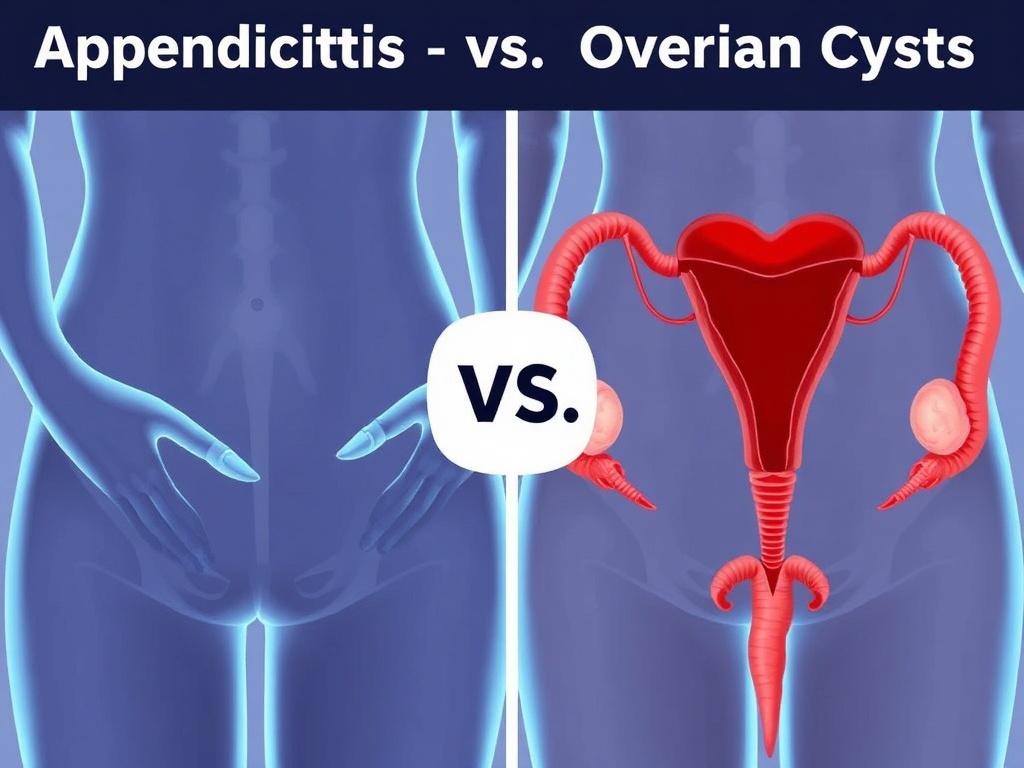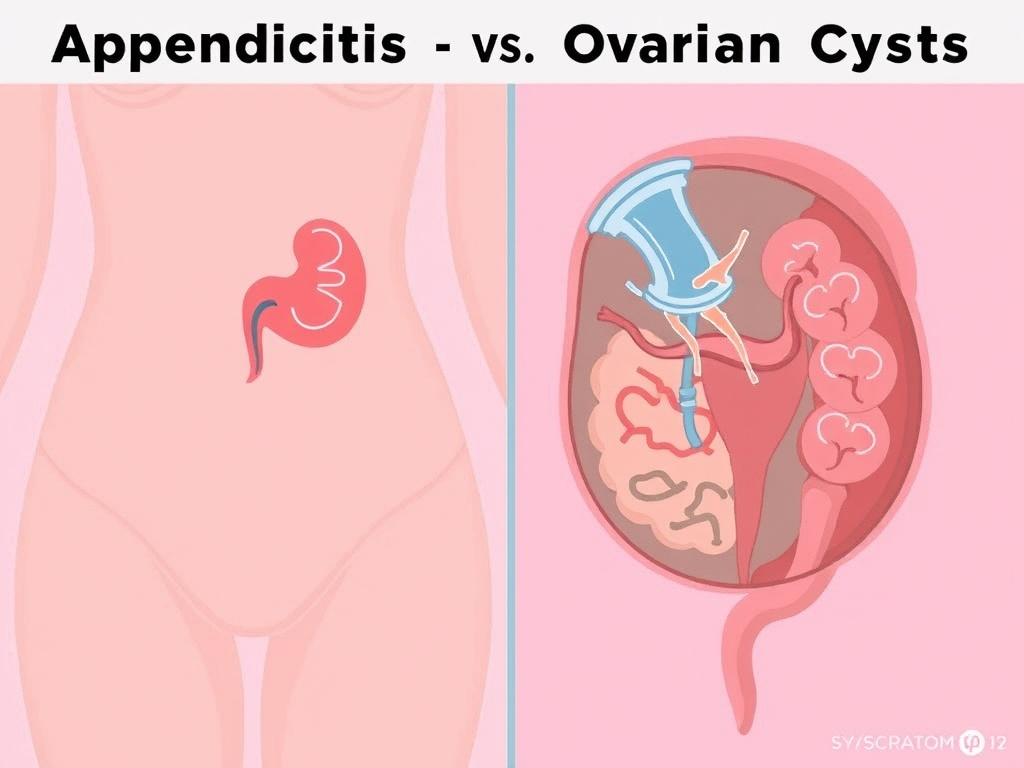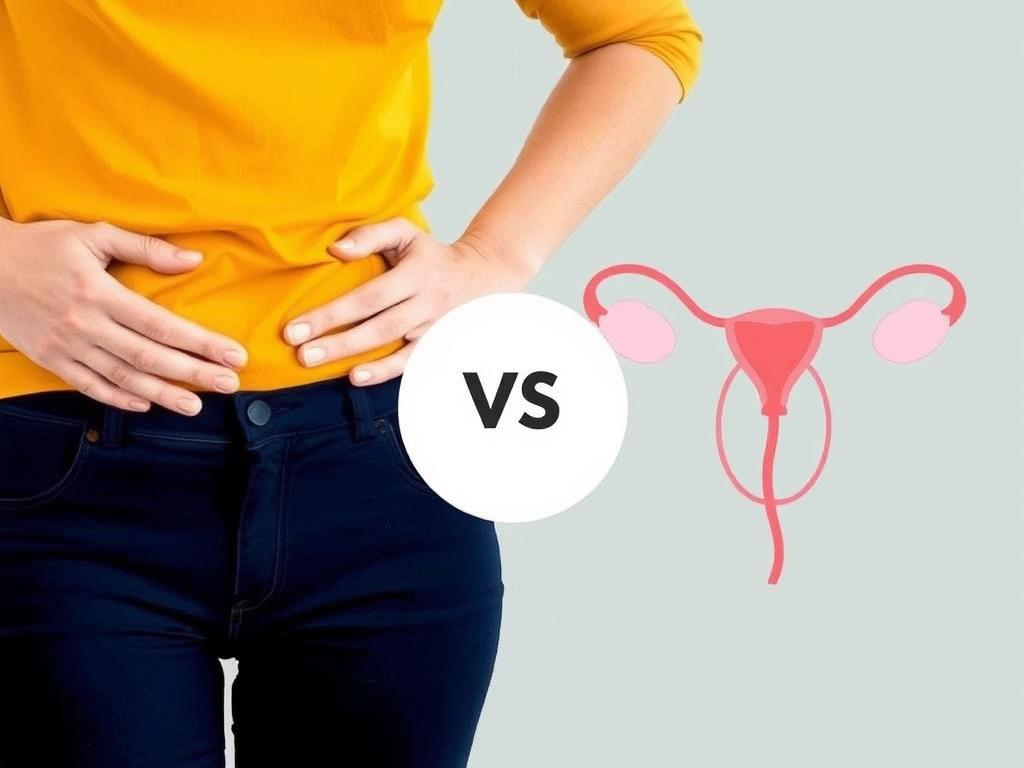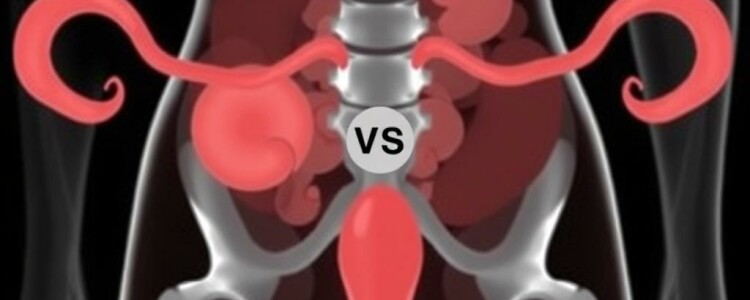When it comes to abdominal pain in women, especially in the lower right side, it can often be a confusing and worrying experience. Two common causes of such pain are appendicitis and ovarian cysts. Even though these conditions may have some overlapping symptoms, they are quite different in terms of cause, treatment, and potential complications. Understanding the differences between appendicitis and ovarian cysts in women is crucial not only for timely diagnosis but also for ensuring appropriate care and avoiding unnecessary anxiety. In this article, we will explore the symptoms, causes, diagnosis, and treatments for both appendicitis and ovarian cysts, shining a clear light on what makes each condition unique.
What is Appendicitis?
Appendicitis is the inflammation of the appendix, a small, tube-like organ attached to the large intestine. Although the appendix does not have an essential known function, appendicitis is considered a medical emergency because a burst appendix can cause serious infections and other complications.
The most classic symptom of appendicitis is sudden pain that often starts near the belly button and then shifts to the lower right side of the abdomen. This pain usually becomes sharper and more severe over time. Other symptoms include nausea, vomiting, loss of appetite, fever, and sometimes diarrhea or constipation.
Appendicitis typically requires prompt surgical removal of the appendix, called an appendectomy. Delay in treatment can lead to the appendix rupturing, which significantly increases the risk of peritonitis, a potentially life-threatening infection of the abdominal cavity.
What are Ovarian Cysts?
Ovarian cysts, on the other hand, are fluid-filled sacs that develop on or inside the ovaries. They are quite common among women, especially during their reproductive years. In many cases, ovarian cysts are harmless and may resolve on their own without needing treatment. However, some cysts can cause pain, discomfort, or even complications if they grow large, rupture, or cause the ovary to twist (a condition called ovarian torsion).
Symptoms of ovarian cysts can vary widely, but many women may experience pelvic pain, bloating, changes in their menstrual cycle, or pain during intercourse. The pain may be sharp or dull and can be on either side of the lower abdomen depending on which ovary has the cyst.
Most ovarian cysts are diagnosed with imaging tests like ultrasound, and treatment ranges from simple monitoring to surgical removal, depending on the size and nature of the cyst.
Comparing Symptoms: Appendicitis vs. Ovarian Cysts
One of the biggest challenges in differentiating between appendicitis and ovarian cysts in women is that both can cause abdominal pain and discomfort. However, there are some key differences that can guide a person or a healthcare provider toward the correct diagnosis.
| Symptom | Appendicitis | Ovarian Cysts |
|---|---|---|
| Location of Pain | Lower right abdomen, sharp and focused | Lower abdomen or pelvis, can be right or left side |
| Onset of Pain | Sudden and progressively worse | Gradual or sudden, variable intensity |
| Nausea/Vomiting | Common | Possible but less common |
| Fever | Often present | Rare |
| Menstrual Changes | None | Often present if cyst related to menstrual cycle |
| Changes in Bowel Movements | Possible constipation or diarrhea | Rare |
This table helps visualize the common symptoms for each condition, but it is important to remember that symptoms may overlap or present differently in individuals.
Causes and Risk Factors
Understanding the underlying causes and risk factors for appendicitis and ovarian cysts can further clarify how these conditions develop and why certain groups of people might be at higher risk.
- Appendicitis: The appendix becomes inflamed primarily due to blockage from fecal matter, infection, or sometimes tumors. The blockage causes bacteria to multiply rapidly, leading to inflammation and infection. Appendicitis can happen at any age but is most common in people between 10 and 30 years old.
- Ovarian Cysts: These usually form due to hormonal fluctuations during the menstrual cycle. Functional cysts, the most common type, develop when a follicle doesn’t release an egg or seals off after releasing it. Other cysts can result from conditions like endometriosis, infections, or benign tumors. Women of reproductive age are most susceptible, especially those with irregular periods or hormone imbalances.
Diagnosing Appendicitis and Ovarian Cysts

When a woman presents with abdominal or pelvic pain, healthcare providers rely on a combination of medical history, physical examination, and diagnostic testing to differentiate between appendicitis and ovarian cysts.
Physical Examination
For appendicitis, doctors look for specific signs such as rebound tenderness (pain upon releasing pressure in the lower right abdomen) and guarding (tensing of abdominal muscles). In ovarian cysts, pelvic exams might reveal tenderness or masses near the ovaries.
Imaging Tests
- Ultrasound: This is often the first imaging test for ovarian cysts since it provides clear visuals of the ovaries and can identify cyst types and sizes. It can also help detect complications like cyst rupture or torsion.
- CT Scan: For suspected appendicitis, a CT scan of the abdomen is highly sensitive and can identify inflammation in the appendix. It can also rule out other causes of abdominal pain, including ovarian cyst complications.
- MRI: Sometimes used when radiation exposure needs to be avoided, such as in pregnancy, or when ultrasound and CT scans are inconclusive.
Blood Tests
Blood tests can support diagnosis. For appendicitis, elevated white blood cell count often signals infection. For ovarian cysts, blood tests are less definitive but may be ordered if malignancy is a concern (CA-125 test).
Treatment Options

Treatments for appendicitis and ovarian cysts differ significantly based on severity, symptoms, and diagnosis.
| Condition | Treatment | Typical Duration | Risks if Untreated |
|---|---|---|---|
| Appendicitis | Appendectomy (surgical removal of appendix), sometimes antibiotics prior to surgery | Quick; surgery often within 24-48 hours | Rupture leading to peritonitis, abscess, sepsis |
| Ovarian Cysts | Watchful waiting for small cysts, pain relievers, hormonal contraceptives to prevent new cysts, surgery if cyst is large, persistent, or causing complications | Varies; small cysts may resolve in a few weeks to months | Rupture, ovarian torsion, rarely malignancy |
When Should Women Seek Medical Attention?
Knowing when to seek medical help can prevent complications. Appendicitis demands fast action — sudden, severe abdominal pain with fever and nausea should prompt an immediate visit to the emergency room.
For ovarian cysts, any sudden sharp pelvic pain, especially accompanied by dizziness, fever, or vomiting, may indicate a ruptured cyst or ovarian torsion and requires urgent evaluation. If pain is mild and intermittent, scheduling a gynecological exam and ultrasound is wise.
Signs Requiring Emergency Care
- Sudden, sharp lower abdominal pain
- High fever with chills
- Persistent vomiting
- Signs of shock such as fainting, rapid heartbeat, or weakness
Prevention and Lifestyle Tips

While appendicitis cannot be entirely prevented, maintaining a healthy diet rich in fiber may reduce the risk by promoting smooth bowel movements and reducing blockages. For ovarian cysts, managing hormonal balance through regular gynecological care and monitoring menstrual health can help detect cysts early.
Maintaining an active lifestyle, managing stress, and staying hydrated are general wellness tips that support reproductive health.
Common Myths and Misconceptions
There are many myths surrounding these conditions, which can cause confusion and fear.
- Myth 1: Appendicitis always causes severe pain. Sometimes appendicitis pain starts mild and can be mistaken for other issues.
- Myth 2: All ovarian cysts require surgery. Most ovarian cysts resolve without surgery.
- Myth 3: Appendicitis only affects men. Women are just as susceptible to appendicitis as men.
- Myth 4: Pain location is always reliable for diagnosis. Pain can sometimes be diffuse or misleading in both conditions.
Living with Ovarian Cysts: What to Expect
For women diagnosed with ovarian cysts, it is important to understand that many cysts are a normal part of the menstrual cycle and are harmless. Frequent monitoring by an OB-GYN may be necessary, but living with cysts does not always mean constant discomfort or surgery.
Pain management, hormonal treatments, or minimally invasive surgery offer a variety of ways to maintain a normal quality of life, even when cysts recur.
Final Thought: The Importance of Accurate Diagnosis
Appendicitis and ovarian cysts can both cause significant abdominal pain in women, but the urgency and treatment methods differ widely. Because timely diagnosis is critical, women experiencing abdominal or pelvic pain should always seek medical evaluation promptly, rather than guessing about the cause themselves.
Only through careful examination, imaging, and sometimes surgical investigation can healthcare professionals determine whether the root cause is appendicitis, ovarian cyst, or some other issue entirely.
Summary Table: Appendicitis vs. Ovarian Cysts
| Aspect | Appendicitis | Ovarian Cysts |
|---|---|---|
| Cause | Inflammation due to blockage/infection of appendix | Fluid-filled sacs related to hormonal changes or ovarian health |
| Symptoms | Sudden, severe right lower abdominal pain, fever, nausea | Pelvic pain, bloating, menstrual changes, sometimes asymptomatic |
| Treatment | Appendectomy (usually surgical emergency) | Observation, hormonal therapy, or surgery if complicated |
| Prognosis | Good with prompt treatment, risk of rupture if delayed | Generally good; complications rare but possible |
Conclusion
Understanding the differences between appendicitis and ovarian cysts in women is essential for recognizing symptoms, seeking timely medical advice, and receiving appropriate treatment. Despite some similarities in symptoms like abdominal pain, the causes and urgency of these conditions differ significantly. Appendicitis requires rapid surgical intervention to avoid dangerous complications, while ovarian cysts often resolve on their own or can be managed with less urgent medical care. Women experiencing pelvic or abdominal discomfort should not ignore their symptoms or rely solely on self-diagnosis but should promptly consult healthcare professionals. This way, they can navigate the complexities of appendicitis vs. ovarian cysts with clarity and confidence, ensuring their health and well-being remain a top priority.



